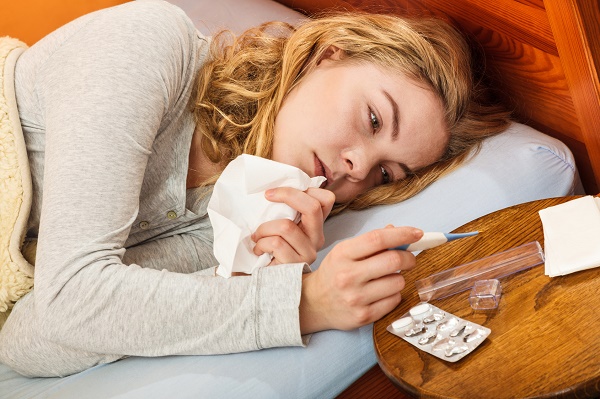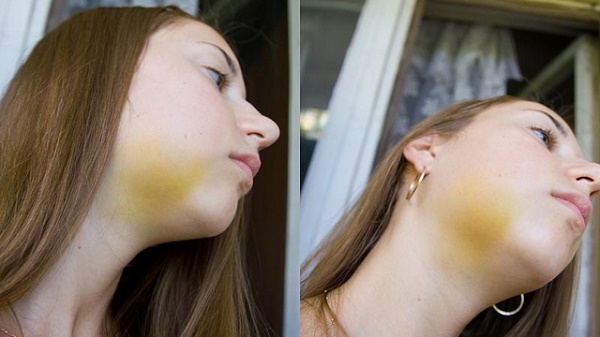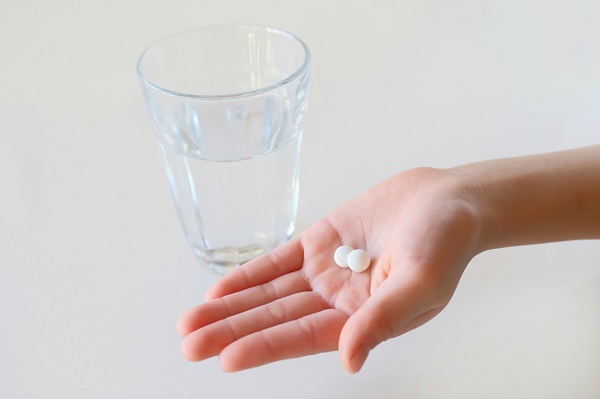Extracting a tooth is always unpleasant, but this procedure is necessary if the tooth cannot be cured with conservative methods.
Usually, after surgery, gum pain appears when the anesthesia wears off and disappears within 3 days, but in some cases, discomfort can continue and intensify.
Often this condition is a sign of complications.
Any surgical intervention, including tooth extraction, is a trauma for the body, so the appearance of pain on the first day is normal. The more difficult the procedure, the more pain will be.
Normal or problem?
Normally, the pain should be moderate, as with a cut, it may increase slightly with pressure or when food gets into the painful area.
Here's what the dentist says about it:
Every day, the pain sensation should subside and disappear completely on the 3-5th day after the operation, depending on its complexity.
With complications, pain has several features:
- The pains become sharp, twitching, there is a feeling as if an abscess has formed in the gum.
- When you touch the area where the gum passes into the cheek, there are strong pain.
- Every day the pain does not subside, but intensifies;
- In parallel with severe pain, swelling of the gums appears, which spreads to the cheek;
- The pain becomes so pronounced over time that it begins to radiate to the ear or neck and is accompanied by headache and fever.

Symptoms are within normal limits
If the operation was successful, the following symptoms may normally appear in the first few days:
- Moderate pain that gets better every day. It is worth noting that if the extraction of the tooth was not difficult, then the pain usually disappears within a day.
But, if the surgeon had to cut the gum or take out the fragments of the teeth one by one, then the pain will be more intense, because the wound is large, in which case the healing process can take up to 5 days.
- The pain is aching. If the operation went without complications, the pain should not be unbearable and acute.
- There is swelling of the gums, but it is not very pronounced and does not increase in size. Edema can occur if the tooth was removed due to inflammation or the operation was very difficult and traumatic.
In this case, the swelling completely disappears within two days.
- low temperature. Such symptoms may appear if the tooth was removed due to inflammation. In this case, an increase in temperature is observed both before and after surgery.
The temperature should not be high, usually up to 37.5 ° C - the norm, and it should not increase over time.
- Blood clot in the hole. A blood clot always forms after tooth extraction, this is the norm.
On the first day it has the color of gore, after a few days a whitish or yellowish film forms on top.
- Increased blood pressure in people with hypertension. This symptom can occur in people with the corresponding disease, since extraction is stressful for the body.
The pressure should not be too high, it must be reduced with a drug prescribed by the attending physician for use in such cases.
- High blood sugar in diabetics. Stress usually triggers the release of adrenaline and can cause a spike in blood sugar, so it's important to have a post-procedure test to prevent any unpleasant consequences.
- It becomes difficult to open your mouth or swallow. Such a symptom may be normal if the operation was difficult, and one of the lower wisdom teeth was removed.
- A small hematoma appears on the gum. Hematoma often appears in the oral cavity after surgery, as small vessels in the gum are injured. It should not progress, cause severe swelling and pain.
- Hematoma on the face. The symptom appears due to fragility of blood vessels or increased blood pressure, it is not dangerous if it is not accompanied by severe pain and impaired jaw mobility.
Symptoms indicating complications
With complications associated with tooth extraction, symptoms occur that cannot be ignored.
If you do not seek the advice of a doctor and do not start treatment on time, you can provoke a number of unpleasant consequences, including such a serious disease as blood poisoning.
- The pain does not subside, but intensifies over time. Often this pain becomes unbearable.
- There is a strong edema. If the swelling increases a day after tooth extraction, then this is a sign of a complication.
Often it can spread to the floor of the face, it becomes asymmetric, the eyelids and cheek are very swollen. This symptom is a sign of alveolitis.
- The lymph nodes are enlarged. This symptom indicates the occurrence of inflammation.
- There is no blood clot in the hole. Such a symptom is a serious complication that leads to inevitable inflammation.
The fact is that the blood clot protects the wound from the penetration of pathogenic microbes into it and, if it is absent, the bacteria easily penetrate inside and cause suppuration.
- The hole is bleeding. If blood is released from the wound a day after extraction, inflammation may occur.
- There is an unpleasant smell from the mouth. A sharp and putrid odor is a sign of an inflammatory process in the wound or suppuration.
- The mobility of the jaw and tongue is impaired. With this symptom, it is difficult for a person to open his mouth, swallow and talk, pain in this case may increase.
Mobility impairment indicates damage to nerve endings.
- A hematoma appears. With a complication, the hematoma increases, sensations of tension appear in the gum.
- There is bleeding. Often such a symptom is accompanied by severe weakness, in which case it is necessary to call an ambulance.
- The temperature rises. The temperature is high, it does not subside with time.

Alveolitis
Alveolitis is an inflammation of the wound after tooth extraction.. The reason for its occurrence is infection of the tooth socket, which occurs both in the absence of a clot and in its presence.
Such a disease is treated only in the dental office, it is impossible to get rid of it at home, therefore it is very important to consult a doctor as soon as possible if signs of alveolitis appear.
Alveolitis is treated in several stages:
- Anesthesia is administered.
- The doctor removes the pus. Without this procedure, it is impossible to cure the disease, even strong antibiotics will not help.
- The wound is washed, an antiseptic preparation is applied to it.
- The doctor prescribes antibiotics and painkillers.
At home, you can only help the hole tighten faster by applying a special paste, which the doctor prescribes after removing the cotton swab with an antiseptic preparation.
Hematoma

To reduce the hematoma, it is necessary to apply cold to it. It is not recommended to warm it up, as heat provokes suppuration. Most often, the hematoma goes away on its own.
In the event that the hematoma progresses and the pain intensifies, it is necessary to visit a doctor to prescribe antibiotics.
Neuritis
If after extraction it is difficult to open the mouth, the tongue becomes less sensitive and swallowing is difficult, damage to the facial nerve is possible.
The patient's condition worsens over time, gradually the face becomes asymmetric and pain occurs.
This complication is rare, and treated for a long time. At the first signs of the disease, you should immediately consult a doctor.
How to prevent complications
To reduce the risk of an inflammatory process in the gum tissue after removal, it is necessary to follow a number of recommendations:
- Do not eat for 2-3 hours after surgery;
- Spit out a cotton swab applied to the wound after 15-20 minutes;
- During the day, apply a cold compress to the cheek every 3 hours for 15-20 minutes to reduce swelling and prevent the development of a hematoma;
- Until the wound heals, refuse hot, spicy, salty and too coarse food. Do not drink alcohol and smoke;
- Do not chew on the side with the wound if possible;
- Do not rinse your mouth too actively to avoid washing out the blood clot from the hole. It is enough to make chamomile baths, for this, draw a solution into the oral cavity and hold it for several seconds;
- You can not warm the wound, put your hand to your cheek and sleep on this side. It is also not recommended to sunbathe, go to the sauna or wash in hot water.
- On the first day, you can not brush your teeth on the side where the extraction was performed. In the following days, oral hygiene should be carried out carefully, without damaging the hole.
- Painkillers are allowed to be taken to relieve pain after anesthesia has worn off.

What drugs will help
With a simple operation, painkillers are usually not prescribed, but to alleviate the condition during the withdrawal of anesthesia, you can take no-shpu.
In cases where the extraction was difficult and the gum was severely damaged, the doctor prescribes a drug that can reduce pain.
- Analgin, paracetamol, ibuprofen and aspirin are anti-inflammatory drugs, reduce fever and reduce pain;
- Nimesulide (ketanov, nise). Very strong drugs that can relieve intense pain;
- Promedol, morphine, fentanyl are narcotic painkillers, they relieve pain well, but are addictive. You should not take such drugs without a doctor's prescription, even with very severe toothache;
- Papaverine, drotaverine (no-shpa) relieve spasm.
Any pain medication must be taken strictly following the dosage to avoid side effects.
You can not drink alcoholic beverages while taking such drugs, as they have a negative effect on the liver, and alcohol enhances it several times.
We will tell you that the dental nerve can be killed at home. But you need to remember that this can cause negative consequences!
Folk remedies
Rinsing will help reduce pain after tooth extraction:
- Soda, relieves pain and relieves swelling;
- Potassium permanganate, chlorhexidine and furatsilin disinfect;
- Herbal decoctions of chamomile, sage, oak bark, yarrow. Herbs relieve pain and speed up wound healing.

Patients say
Pain after tooth extraction is very common and gives the patient a number of inconveniences. If you have encountered such a problem and know how to solve it quickly, leave your feedback, which will undoubtedly help the readers of the article to overcome the disease.





